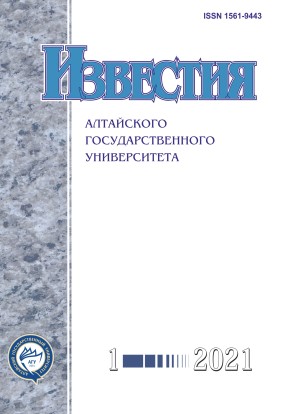Model Assessment of Accidents Factor Impact on Efficiency of Water Utilities
УДК 519.87
Abstract
The objective of the study is numerical modeling of the relationship between resources and results of water utilities with consideration of the accident factor. Usage of numerical methods to assess and predict the reduction of accident rate of a water utility enterprise during its development can be considered as a novelty. Eight Russian cities and their water utility enterprises are taken as an example for developing and testing the numerical model, which applied further to solve the problem. Only three out of eight enterprises with mixed ownership (Voronezh, Cheboksary, and Yakutsk) are able to improve their efficiency by following the predicted conditions of the minimal accident rate. Starting points with external sources are considered to be the most effective for external investment when external resources are transformed into results as effectively as possible. There are two water utility enterprises in this category during the 2013- 2017 period — Voronezh (2nd and 4th periods) and Orenburg (3rd period). It is shown that the growth point and the starting point with internal sources are the most effective when using their own resources.
Downloads
Metrics
References
Ariaratnam S.T., Lueke J.S., Michael J.K. Current trends in pipe bursting for renewal of underground infrastructure systems in North America // Tunnelling and Underground Space Technology. 2014. Vol. 39. DOI: 10.1016/j.tust.2012.04.003.
Bewszko T., Slys D. Multi-criteria decision aid for the selection of open trenching technology for modernisation of municipal infrastructure systems // Tunnelling and Underground Space Technology. 2014. Vol. 39. DOI: 10.1016/j.tust.2012.11.012.
Rehan R., Knight M.A., Unger A.J., Haas C.T. Financially sustainable management strategies for urban wastewater collection infrastructure - development of a system dynamics model // Tunnelling and Underground Space Technology. 2014. Vol. 39. DOI: 10.1016/j.tust.2012.12.003.
Цхай А.А. Развитие предприятий водокоммунального хозяйства: взаимосвязь ресурсов и результатов // Водное хозяйство России: проблемы, технологии, управление. 2018. № 4.
Tskhai A. Model for evaluating the efficiency of Russian water utilities // Utilities Policy. 2020. Vol. 62. 100986. DOI: 10.1016/j.jup.2019.100986.
Самарский А.А. Введение в численные методы. М., 1982. 286 с.
ООО «Росводоканал-Воронеж» г. Воронежа. URL: https://voronezh-rvk.ru (дата обращения: 20.05.2020).
МУП «Водоканал» г. Иркутска. URL: https://www.irkvkx.ru (дата обращения: 20.05.2020).
ООО «Оренбург Водоканал» г. Оренбурга. URL: https://oren-vodokanal.ru (дата обращения: 20.05.2020).
АО «Ростовводоканал». URL: https://vodokanalrnd.ru (дата обращения: 20.05.2020).
МП «Саранскгорводоканал» г. Саранска. URL: https://www.vksar.ru (дата обращения: 20.05.2020).
ООО «Томскводоканал» г. Томска. URL: https://www.vodokanal.tomsk.ru (дата обращения: 20.05.2020).
АО «Водоканал» г. Чебоксары. URL: https://vodo-kanal.ru/ (дата обращения: 20.05.2020).
АО «Водоканал» г. Якутска. URL: https://vodokanal-ykt.ru (дата обращения: 20.05.2020).
Izvestiya of Altai State University is a golden publisher, as we allow self-archiving, but most importantly we are fully transparent about your rights.
Authors may present and discuss their findings ahead of publication: at biological or scientific conferences, on preprint servers, in public databases, and in blogs, wikis, tweets, and other informal communication channels.
Izvestiya of Altai State University allows authors to deposit manuscripts (currently under review or those for intended submission to Izvestiya of Altai State University) in non-commercial, pre-print servers such as ArXiv.
Authors who publish with this journal agree to the following terms:
- Authors retain copyright and grant the journal right of first publication with the work simultaneously licensed under a Creative Commons Attribution License (CC BY 4.0) that allows others to share the work with an acknowledgement of the work's authorship and initial publication in this journal.
- Authors are able to enter into separate, additional contractual arrangements for the non-exclusive distribution of the journal's published version of the work (e.g., post it to an institutional repository or publish it in a book), with an acknowledgement of its initial publication in this journal.
- Authors are permitted and encouraged to post their work online (e.g., in institutional repositories or on their website) prior to and during the submission process, as it can lead to productive exchanges, as well as earlier and greater citation of published work (See The Effect of Open Access).








